Rosy Bonnet / Summer / Autumn / Toxic
Scientific Name
Mycena rosea
Common Names
Rosy hat, Rosy Bell cap
Family
Mycenaceae
Habitat
They are saprotrophic, living off dead matter, they are mostly found in mixed or coniferous woodlands, on acidic soils.
Description
Less common than the very closely related Lilac Bonnet (Mycena pura) they tend to be larger, both contain the toxin muscarine so should be avoided.
Identifying Features:
Cap:
Bell shaped and then flattening out with a central raised umbo. They can be quite changeable. They are typically lilac in colour with a paler almost white edge. Up to 6cm across. They tend to turn up at their edges as they grow showing the pale gills.
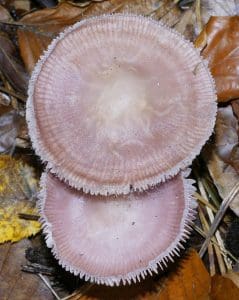
Stem:
Thin, fibrous and quite often twisted, tapering towards the base. They are smooth and grey. Up to 8 cm long and is broader then the stem of the Lilac Bonnet.
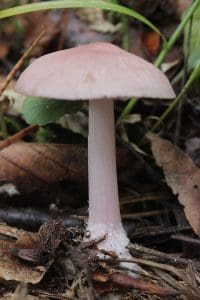
Gills:
The gills are white to grey, with a slight pink tinge. Adnate to slightly decurrent.
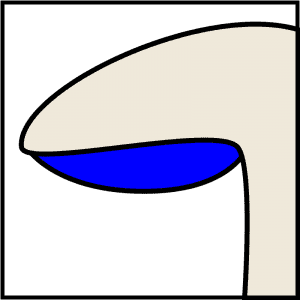
Smell:
A raddishy smell when they are damaged.
Spores:
White.
Known hazards
They contain the toxin muscarine although in small quantities, they should be avoided.
Potential lookalikes
They could be confused with other bonnet species for example the Common Bonnet (Mycena galericulata) but these have paler caps and have much more complex gills.
The Lilac Bonnet (Mycena pura) also looks similar in fact some believe they are the same species. Pura tends to be smaller and is also toxic.
Extra Notes
This mushroom has bioluminescent properties and they emit a faint green light at night.
The name Mycena comes from the hats worn by the ancient Greek Mycenae people.
Rosea comes from the Latin word for pink or rosy.
Resources
https://www.first-nature.com/fungi/mycena-rosea.php
https://www.naturespot.org.uk/species/rosy-bonnet
https://www.ispotnature.org/communities/uk-and-ireland/view/observation/791229/rosy-bonnet



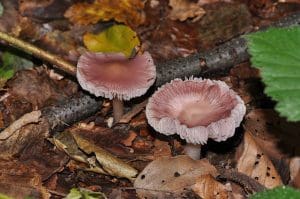
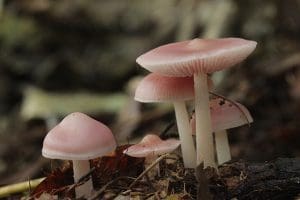



Leave a Reply
You must be logged in to post a comment.